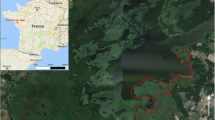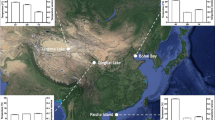Abstract
The effects of food availability and nest predation on several life history traits such as adult survival, dispersal, and reproductive performance were assessed in an Audouin's gull (Larus audouinii) colony during the period 1992–1997. The amounts of fish discarded from trawlers were used as a measure of food availability, and a trawling moratorium which partially overlapped with the breeding season of the gulls was taken into account. The effects of nest predation were assessed in 1994, when a terrestrial predator entered the colony and remained for the whole breeding season preying on both eggs and chicks. Using the moratorium and the predatory event as natural experiments, several hypotheses were tested: (a) food supply would affect breeding performance but not adult survival (independently of age and sex), since gulls are long-lived and adult survival is the most sensitive demographic parameter in their population dynamics; (b) the predator would trigger breeding dispersal (although gulls are mostly philopatric, they are known to abandon their natal colony after breeding failure instigated by events such as this). If breeding dispersal occurs, the rate is expected to be higher in females than in males, and higher in new breeders than in more experienced breeding birds, as is usually recorded in colonial seabirds. Probabilities of resighting and survival were estimated separately, using capture-recapture models. As expected, changes in food availability did not affect adult survival, whereas they influenced egg volume, clutch size, and breeding success. Local adult survival was estimated to be 0.908 (SD = 0.007) for males and females, and it did not change significantly with the age of individuals (range 3–8 years). The predator significantly decreased breeding success, and caused the dispersal of a number of adults probably to breed in another colony; this rate was estimated at an average of 0.10 (SD = 0.02). As expected, inexperienced breeders dispersed significantly more (14%) than more experienced breeders (8%) after the predator event, but dispersal was not sex biased. Recapture probabilities after the predator event suggest that birds that left the colony still had not returned. Results confirm that population dynamics of ground-nesting seabirds are sensitive to terrestrial predation, even when predation caused only a partial breeding failure.
Similar content being viewed by others
Author information
Authors and Affiliations
Additional information
Received: 16 July 1998 / Accepted: 16 November 1998
Rights and permissions
About this article
Cite this article
Oro, D., Pradel, R. & Lebreton, JD. Food availability and nest predation influence life history traits in Audouin's gull, Larus audouinii . Oecologia 118, 438–445 (1999). https://doi.org/10.1007/s004420050746
Issue Date:
DOI: https://doi.org/10.1007/s004420050746




